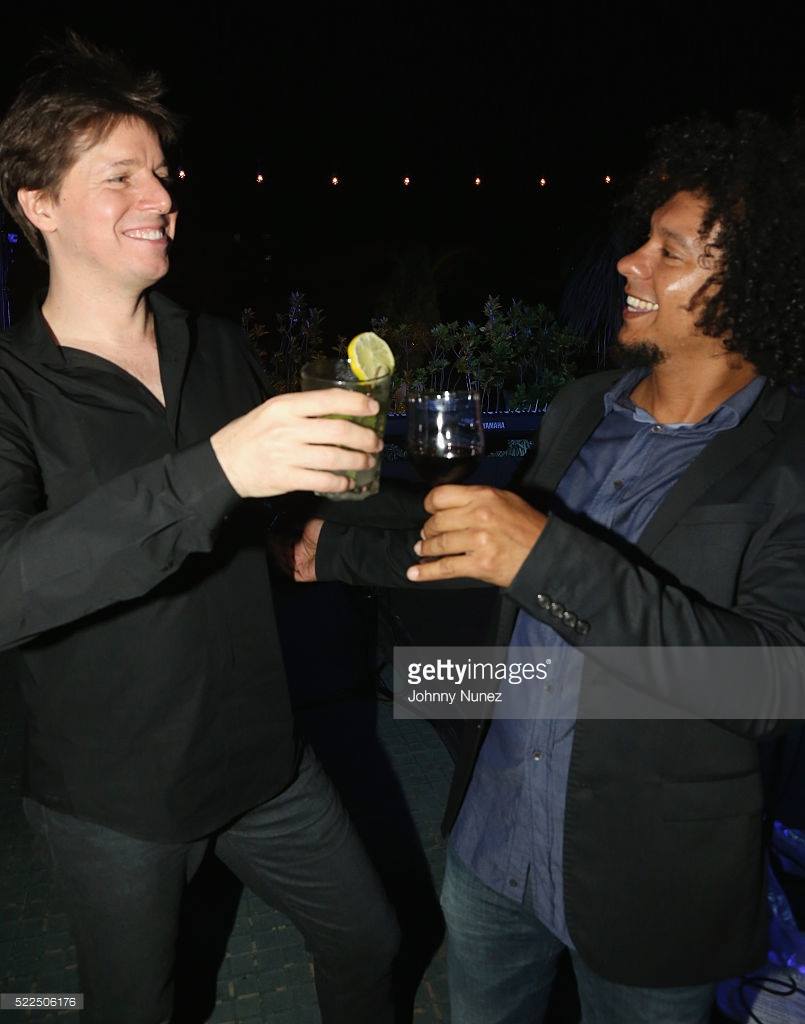Aldo Lopez Gavilan (far right), featured in our upcoming film, with Usher, Joshua Bell, Larisa Martínez- Soprano, Carlos Varela, Dave Matthews Band, and Smokey Robinson celebrating with the U.S. artist delegation visiting and collaborating in Cuba this week.
Ken interviews El Oso last spring for our short film, LA RUEDA DE LA VIDA /WHEEL OF LIFE.
We celebrated Ken's birthday at the most excellent Havana Film Festival New York—a gem of an event —where we had a sneak preview of our new short film, LA RUEDA DE LA VIDA / WHEEL OF LIFE. We shared the screen with a remarkable group of visiting directors and actors from Cuba, and elsewhere in Central and South America, and were delighted to reconnect with Rafael Solis, one of the cinematographers for our upcoming story of photographer, Ivan Soca.
Rafael Solis at work documenting photographer Ivan Soca.
RUEDA DE LA VIDA is our short film tribute to El Oso, one of the founders of casino, the godmother of salsa. El Oso’s charming story reminds us that salsa, thought to be a confluence of Puerto Rican and New York cultures, is rooted in Cuba. Our screening inspired a group of casineros in the audience to dance in the lobby after the screening.
An inspired audience takes the dancing off the screen and into the theater lobby at the Havana New York Film Festival, where WHEEL OF LIFE previewed.
A highlight of our weekend in New York—Ilmar Gavilan, a Cuban-born violinist living in New York, came to our screening. Ilmar is a violinist with the Harlem String Quartet, and his brother Aldo is one of Cuba’s greatest jazz pianists. We had lunch and drinks with Ilmar, who left Cuba as a teenager to continue his music education in Moscow. That was in 1986. Although he travels often to see his family, geopolitics have prevented the two virtuoso brothers from touring together in the U.S. Ilmar’s quartet plays a range of music spanning from Mendelssohn to Billy Strayhorn’s Take the A Train. Aldo, called “a genius, a star” by none other than Chucho Valdés, has a rich creative life in Cuba, but only a few opportunities to play in the US. That will start to change this summer, when he tours with Ilmar and his Quartet, plays with an orchestra in Napa, CA, and joins Harold López-Nussa, his dear friend (and our series composer) for a date at San Francisco Jazz Center. We are looking for funding right now to support our telling this story of two virtuoso brothers, separated by geopolitics, whose lives might finally converge—the third in the (R)evolution Cuba series. We welcome introductions, tax deductible contributions, ideas!
Ilmar Gavilan's Harlem String Quartet, bringing jazz and classical excellence to underserved kids.
We were lucky to catch Ilmar and the Harlem String Quartet play in Santa Rosa. After Ilmar and I spent the following day appreciating a beautiful San Francisco day. Muir Woods (they don’t make ancient redwoods in Cuba nor in New York), Hawk Hill for a view of the Golden Gate Bridge, some in-car video of the Hyde Street Cable Car, and yes, the Sea Lions at Pier 39. Oh—and delicious food and margaritas at Tommy’s Restaurant in our neighborhood, the Richmond. I had just met Julio, the owner, at an event in Havana—small world!
Ilmar enjoying the Bay Area as we chat about profiling him and his brother, Aldo, in Dos Hermanos / 2 Brothers.
Meanwhile in Havana, Aldo, the pianist brother toasts with violinist Joshua Bell, after performing together in Havana. Bell was part of a U.S. delegation of artists that included Usher, Dave Matthews and Smokey Robinson.
And back at PatchWorks in San Francisco, the footage Ken shot of the Ivan Soca's story last month has been translated and readied for editing. We start in earnest next Monday. Stay tuned.



















































